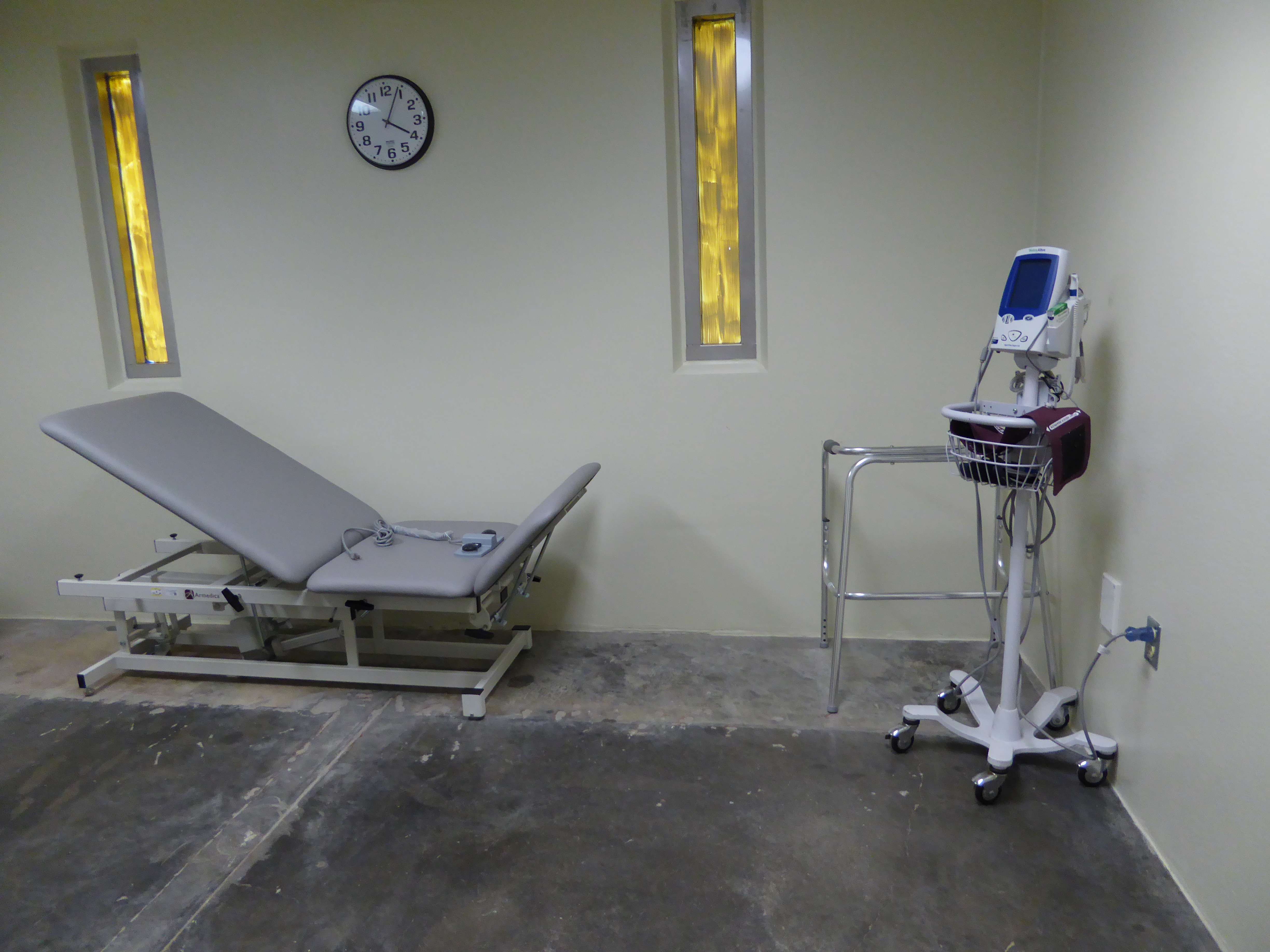Guantanamo prison takes on geriatric airs
A physical therapy room has been set up for older detainees at Guantanamo Bay prison (Sylvie LANTEAUME)
Guantanamo Bay Naval Base (Cuba) (AFP) – The controversial Guantanamo Bay prison still houses 40 aging inmates — and with no plans to close it, many of them will probably remain there until they die.
The population still imprisoned at the military base in Cuba range from middle-aged to elderly — the oldest inmate is 71 — so the prison with a history of torture has taken on some airs of a geriatric facility.
The US Army — directed to ensure Guantanamo can stay open at least another 25 years — has revamped parts of the institution home to terror suspects to include a dedicated medical center and operating rooms.
“There has been a lot of thought put into what preparing for an aging detainee population looks like and what infrastructure we need to have in place to do that safely and humanely,” said Anne Leanos, the public affairs director for Joint Task Force Guantanamo.
With a budget of $12 million, a prison annex has been transformed into a public hospital, complete with a radiology room equipped with an MRI scanner, as well as an emergency room and three-bed intensive care unit.
During a journalist visit to the new clinic, a walker sits in the corner of a room, which has a hospital bed, wheelchair and medical equipment akin to any other infirmary.
But there is no window, and wire mesh serves as a partition, recalling that this is still very much a detention center.
Congress will not allow sick prisoners to travel to the United States for treatment: Guantanamo inmates are considered highly dangerous by the government, which accuses them of participating in various attacks including those of September 11.
– ‘Still fighting’ –
No prisoner needs a wheelchair yet — but if the need arises, the clinic is prepared with ramps.
Patients suffer from ailments common for their age: diabetes, hypertension, gastrointestinal diseases and motor disorders.
The second-floor psychiatric ward is equipped with two cells converted into consultation rooms.
A third, completely empty cell is padded and serves as the isolation room for prisoners experiencing psychotic episodes.
Like any staff deployed to Guantanamo, prison psychiatrists usually stay just nine to 12 months on site, limiting the scope of their interaction with prisoners.
The International Committee of the Red Cross (ICRC) visits Guantanamo about four times a year to make sure the prison is complying with detention standards and to assess detainees’ treatment.
Since the infamous detention center opened in 2002, nine inmates have died: seven committed suicide, according to the military, while one died of cancer and another had a heart attack.
The largest contingent — 26 inmates — at the military complex have never been charged with anything, but are considered too dangerous to be released.
One “highly compliant” inmate was on a “non-religious fast,” at the moment of the visit — a euphemism used at the prison to describe hunger strikes prisoners regularly observe in protest.
Acts of rebellion are fairly common — and base commander Admiral John Ring said one inmate was currently under disciplinary action.
“These are the ones that could not be released,” said Ring. “Many of these gentlemen are still at war with the United States.
“Any act of resistance, no matter how small — they are still fighting the war through these minor acts of resistance.”
Disclaimer: This story has not been edited by Siliconeer and is published from a syndicated feed. Siliconeer does not assume any liability for the above story. Validity of the above story is for 7 Days from original date of publishing. Content copyright AFP.


